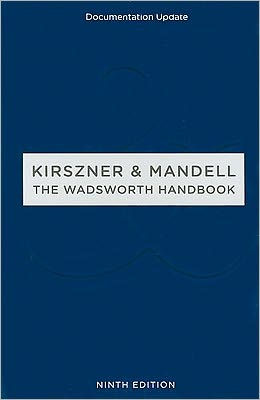5
1
9781111829421


The Wadsworth Handbook, Documentation Update / Edition 9 available in Hardcover

The Wadsworth Handbook, Documentation Update / Edition 9
- ISBN-10:
- 111182942X
- ISBN-13:
- 9781111829421
- Pub. Date:
- 12/27/2010
- Publisher:
- Cengage Learning
- ISBN-10:
- 111182942X
- ISBN-13:
- 9781111829421
- Pub. Date:
- 12/27/2010
- Publisher:
- Cengage Learning
198.95
In Stock

Product Details
| ISBN-13: | 9781111829421 |
|---|---|
| Publisher: | Cengage Learning |
| Publication date: | 12/27/2010 |
| Edition description: | Older Edition |
| Pages: | 848 |
| Product dimensions: | 5.80(w) x 8.60(h) x 1.40(d) |
About the Author
From the B&N Reads Blog
